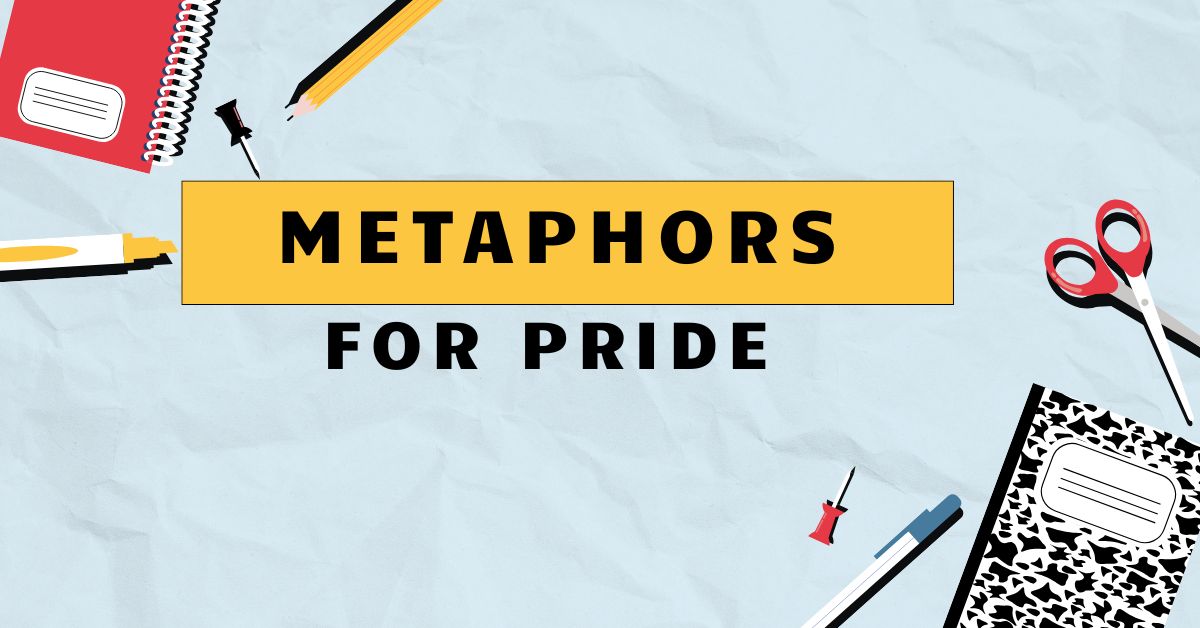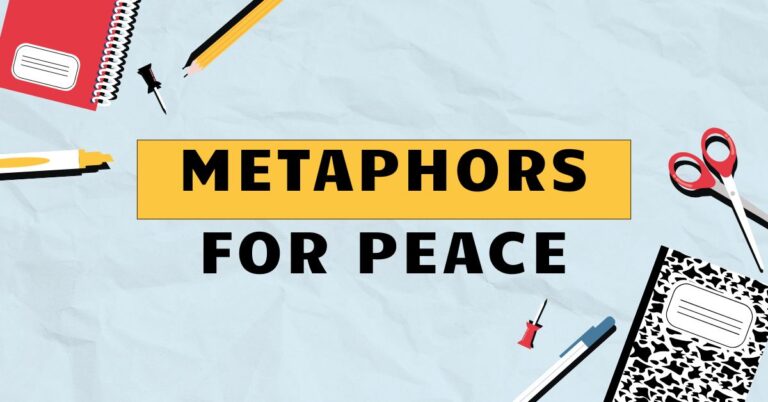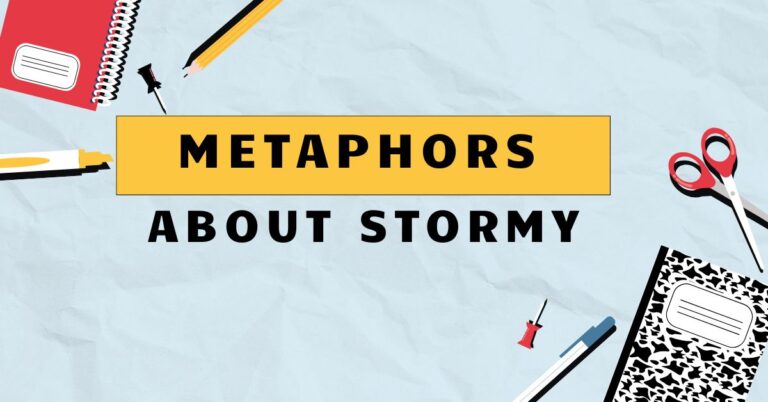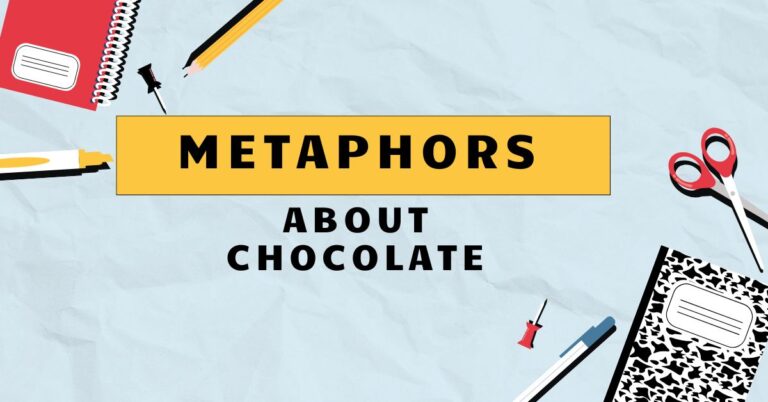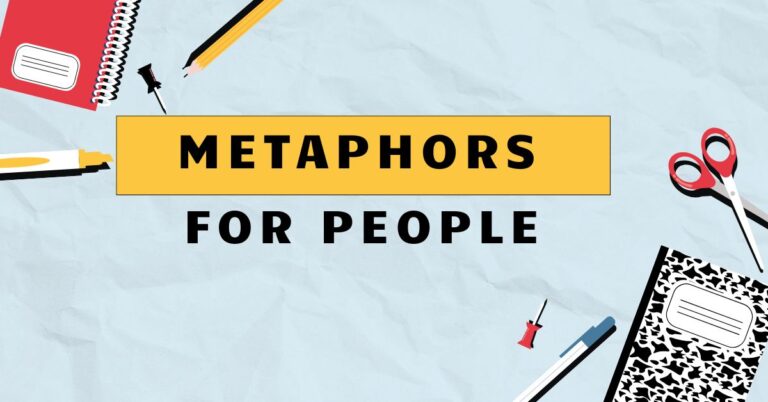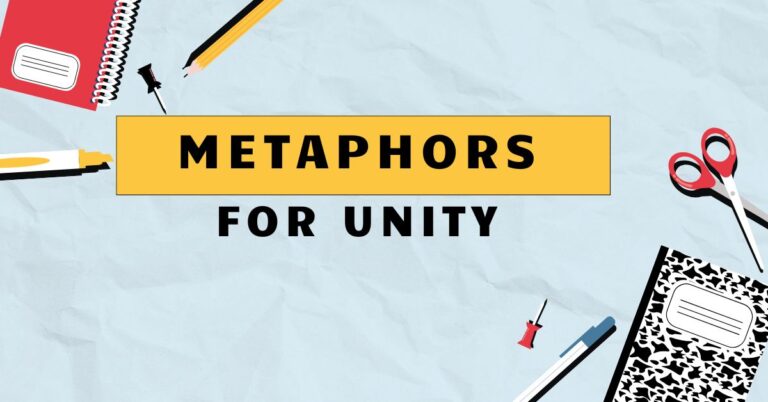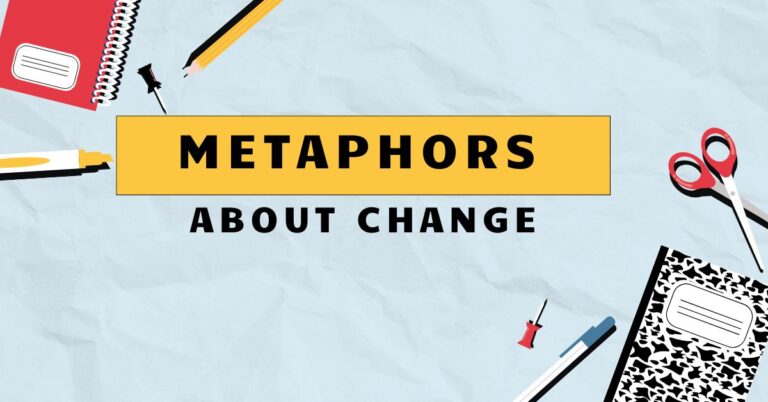41 Metaphors for Pride: Understanding Figurative Language
Pride, a complex human emotion, is often expressed through metaphors that paint vivid pictures and add depth to our understanding. Mastering the use of metaphors for pride not only enriches your vocabulary but also enhances your ability to communicate effectively and creatively.
This article explores the various types of metaphors used to describe pride, providing numerous examples, usage rules, and practice exercises to help you grasp this concept fully. Whether you are an English language learner, a student of literature, or simply someone who enjoys exploring the nuances of language, this guide will provide valuable insights into the art of using metaphors for pride.
Through detailed explanations, diverse categories, and practical exercises, you’ll learn to identify, interpret, and use metaphors for pride with confidence. Understanding these metaphors will also improve your comprehension of literature, poetry, and everyday conversations where figurative language is employed to convey deeper meanings.
So, let’s embark on this journey to explore the fascinating world of metaphors for pride and unlock the power of figurative language.
Table of Contents
- Definition of Metaphor for Pride
- Structural Breakdown of Pride Metaphors
- Types and Categories of Pride Metaphors
- Examples of Pride Metaphors
- Usage Rules for Pride Metaphors
- Common Mistakes with Pride Metaphors
- Practice Exercises
- Advanced Topics in Pride Metaphors
- Frequently Asked Questions
- Conclusion
Definition of Metaphor for Pride
A metaphor for pride is a figure of speech that describes pride by comparing it to something else, without using “like” or “as.” These metaphors help to convey the intensity, nature, or consequences of pride in a more vivid and relatable way. Pride, in this context, can refer to a feeling of deep pleasure or satisfaction derived from one’s own achievements, the achievements of those with whom one is closely associated, or from qualities or possessions that are widely admired.
Metaphors function by transferring qualities from one thing to another, enriching the description and providing a deeper understanding. For example, saying someone is “a peacock” when they are proud doesn’t mean they are literally a bird, but it implies they display their accomplishments or qualities in a showy and ostentatious manner, much like a peacock displays its feathers.
This figurative language adds nuance and depth to our understanding of pride.
The context in which a metaphor is used is crucial for its interpretation. The same metaphor can have different meanings depending on the situation.
For instance, “a towering ego” suggests an inflated sense of self-importance, while “a quiet sense of accomplishment” implies a more subdued and personal pride. Understanding the context allows us to accurately interpret the intended meaning of the metaphor and appreciate its effectiveness in conveying complex emotions.
Structural Breakdown of Pride Metaphors
The structure of a metaphor for pride typically involves two key elements: thetenorand thevehicle. The tenor is the subject being described (in this case, pride), and the vehicle is the object or concept to which pride is being compared.
The relationship between the tenor and vehicle is what creates the metaphorical meaning.
Consider the metaphor “Pride is a fortress.” Here, “pride” is the tenor, and “fortress” is the vehicle. The metaphor suggests that pride can be a strong, defensive structure, protecting one’s ego but also isolating them from others.
The effectiveness of the metaphor lies in the shared qualities between pride and a fortress, such as strength, protection, and potential isolation.
The underlying implication, orground, is the connection between the tenor and the vehicle. In the example above, the ground is the idea of defensiveness and protection.
Understanding the ground is essential for interpreting the metaphor correctly. The ground might be explicitly stated or implied, requiring the reader or listener to infer the connection between the tenor and the vehicle.
The structure of a metaphor can also include elements ofextension, where the metaphor is elaborated upon to create a more complex and nuanced image. For example, “His pride was a fortress, with walls so high that no humility could scale them.” This extended metaphor builds upon the initial comparison, adding details about the fortress (high walls) to emphasize the impenetrable nature of the person’s pride.
By understanding the structural elements of metaphors, we can better appreciate their complexity and effectiveness in conveying deeper meanings.
Types and Categories of Pride Metaphors
Metaphors for pride can be categorized based on the types of vehicles used to describe it. Here are some common categories:
Animal Metaphors for Pride
Animal metaphors often associate pride with the characteristics of certain animals known for their perceived arrogance or self-importance. These metaphors can be particularly vivid and impactful.
Physical Attribute Metaphors for Pride
These metaphors use physical attributes or states to describe pride, such as height, size, or hardness. They often convey the intensity or magnitude of pride.
Nature Metaphors for Pride
Nature metaphors draw comparisons between pride and natural elements like mountains, storms, or sunlight. These metaphors often emphasize the power, beauty, or destructive potential of pride.
Object-Based Metaphors for Pride
Object-based metaphors use inanimate objects to represent pride, often highlighting its artificiality or the way it can be constructed and maintained.
Color Metaphors for Pride
Color metaphors use specific colors to symbolize pride, often drawing on the cultural associations of those colors. For example, gold might represent pride in wealth or achievement.
Examples of Pride Metaphors
Below are several tables providing examples of metaphors for pride, categorized by the type of vehicle used. These examples illustrate the diverse ways in which pride can be expressed through figurative language.
The following table provides a multitude of examples showcasing animal metaphors for pride, highlighting how different animals embody aspects of pride, from vanity to dominance.
| Metaphor | Explanation |
|---|---|
| He’s a peacock. | He displays his accomplishments ostentatiously. |
| She struts like a rooster. | She walks with an exaggerated sense of self-importance. |
| His pride roared like a lion. | His pride was powerful and intimidating. |
| They puffed up like pigeons. | They became overly proud and self-satisfied. |
| She was a proud swan, gliding effortlessly. | She carried herself with grace and self-assurance. |
| He behaved like the top dog. | He acted as if he was superior to everyone else. |
| She was as proud as a mother hen. | She felt great pride in her children’s accomplishments. |
| His ego was a strutting turkey. | His ego was inflated and ridiculous. |
| He acted like a king of the jungle. | He behaved as if he was the most important person in the room. |
| Her pride stood tall like a giraffe. | Her pride was very noticeable and prominent. |
| He preened like a bird of paradise. | He took great care in his appearance to show off. |
| Her pride was a protective bear. | She fiercely defended her accomplishments. |
| He soared like an eagle, fueled by pride. | He achieved great heights due to his pride. |
| She hissed like a snake when her pride was wounded. | She reacted angrily when her pride was hurt. |
| He was a proud stallion, full of vigor. | He exuded confidence and energy. |
| Her pride was a silent wolf, watching and waiting. | Her pride was subtle but always present. |
| He crowed like a rooster after his victory. | He boasted loudly after winning. |
| She carried herself like a queen bee. | She acted as if she was in charge and superior. |
| His pride was a stubborn mule. | His pride made him unwilling to back down. |
| He pranced like a show pony. | He showed off his abilities in a flamboyant way. |
| His pride was as fierce as a tiger. | His pride was intense and unrelenting. |
| She guarded her reputation like a lioness protects her cubs. | She fiercely protected her reputation. |
| He was a lone wolf, driven by his own pride. | He was independent and motivated by his own sense of accomplishment. |
| Her pride was a soaring falcon, reaching for the sky. | Her pride motivated her to achieve great things. |
| He was as proud as a peacock displaying its feathers. | He was extremely proud and showed it off to everyone. |
This table illustrates how we use physical attributes to metaphorically represent pride, focusing on qualities such as height, solidity, and brilliance.
| Metaphor | Explanation |
|---|---|
| His pride was a towering inferno. | His pride was overwhelming and destructive. |
| She stood tall with pride. | She felt proud and confident. |
| His ego was a massive structure. | His ego was inflated and imposing. |
| Her pride shone brightly. | Her pride was evident and radiant. |
| His pride was a heavy burden. | His pride weighed him down. |
| She wore her pride like a shimmering cloak. | She displayed her pride proudly and visibly. |
| His pride was a solid wall. | His pride was impenetrable and unyielding. |
| Her accomplishments were a shining beacon of pride. | Her achievements were a source of great pride. |
| His pride swelled within him. | He felt an overwhelming sense of pride. |
| Her pride was a deep well. | Her pride was profound and enduring. |
| His ego was an unshakeable mountain. | His ego was strong and unwavering. |
| She radiated pride. | She exuded a sense of pride. |
| His pride was a sharp, cutting edge. | His pride made him critical and severe. |
| Her heart swelled with pride. | She felt an intense sense of pride. |
| His pride was a blinding light. | His pride obscured his judgment. |
| She carried her pride like a crown. | She bore her pride with dignity and grace. |
| His pride was a suffocating blanket. | His pride stifled his growth. |
| Her spirit soared with pride. | She felt uplifted by her pride. |
| His pride was a consuming fire. | His pride dominated his thoughts and actions. |
| She wore her accomplishments like a sparkling jewel. | She proudly displayed her accomplishments. |
| His pride was a tight knot in his stomach. | His pride made him anxious and tense. |
| She stood firm, her pride unyielding. | She remained steadfast in her pride. |
| His pride was a vast expanse, stretching to the horizon. | His pride was limitless and all-encompassing. |
| Her joy was a glittering cascade of pride. | Her joy was intertwined with a strong sense of pride. |
| His pride was an icy fortress, impenetrable and cold. | His pride isolated him and made him unapproachable. |
The subsequent table provides various nature-based metaphors that illustrate pride through elements such as mountains, storms, and sunlight, capturing its grandeur, force, or illuminating quality.
| Metaphor | Explanation |
|---|---|
| His pride was a towering mountain. | His pride was immense and imposing. |
| She bloomed with pride. | She flourished and felt proud. |
| His pride was a raging storm. | His pride was overwhelming and destructive. |
| Her achievements were the fruits of her pride. | Her accomplishments were a result of her pride. |
| His ego was a barren desert. | His ego was empty and unproductive. |
| She basked in the sunlight of her pride. | She enjoyed the recognition and admiration resulting from her pride. |
| His pride was a deep ocean. | His pride was vast and unfathomable. |
| Her spirit soared like a bird on the winds of pride. | Her spirit was uplifted by her pride. |
| His pride was a dormant volcano. | His pride was suppressed but could erupt at any moment. |
| She was rooted in pride. | Her pride was a fundamental part of her identity. |
| His pride was a dense forest. | His pride was complex and difficult to navigate. |
| Her accomplishments were a field of blooming flowers, nurtured by pride. | Her achievements were beautiful and a result of her pride. |
| His pride was a harsh winter. | His pride was cold and unforgiving. |
| She blossomed under the light of her own pride. | She thrived because of her own sense of accomplishment. |
| His pride was a winding river. | His pride was ever-present and guided his actions. |
| Her pride was as vast as the sky above. | Her pride was limitless and expansive. |
| His pride was a thorny bush. | His pride made him difficult to approach. |
| She was a sturdy oak, her roots deep in pride. | Her pride gave her strength and stability. |
| His pride was a silent, creeping fog. | His pride subtly influenced his behavior. |
| Her pride was a gentle breeze, carrying her forward. | Her pride motivated her in a subtle but effective way. |
| His pride was a scorching sun. | His pride was intense and overwhelming. |
| She stood tall like a redwood, her pride unyielding. | She was strong and unwavering in her pride. |
| His pride was a dark cloud, obscuring his judgment. | His pride clouded his ability to make rational decisions. |
| Her pride was a clear stream, reflecting her achievements. | Her pride was transparent and a direct result of her accomplishments. |
| His pride was a looming shadow, always present. | His pride constantly influenced his thoughts and actions. |
This table offers examples of object-based metaphors that use inanimate objects to symbolize pride, emphasizing aspects such as artificiality, construction, or maintenance.
| Metaphor | Explanation |
|---|---|
| His pride was a gilded cage. | His pride was beautiful but confining. |
| She polished her pride. | She carefully cultivated her pride. |
| His ego was a house of cards. | His ego was fragile and easily toppled. |
| Her accomplishments were trophies of pride. | Her achievements were symbols of her pride. |
| His pride was a sharp sword. | His pride was dangerous and could hurt others. |
| She built a wall of pride around herself. | She isolated herself with her pride. |
| His pride was a ticking time bomb. | His pride was likely to explode in anger or arrogance. |
| Her reputation was a delicate vase, easily shattered by pride. | Her reputation was vulnerable to the negative effects of pride. |
| His pride was a heavy chain. | His pride restricted his freedom. |
| She wore her accomplishments like medals of pride. | She proudly displayed her achievements. |
| His pride was a rusty lock. | His pride hindered his progress. |
| Her spirit was encased in a suit of armor made of pride. | Her pride protected her but also isolated her. |
| His pride was a brittle mirror. | His pride reflected a distorted image of himself. |
| She carried her pride like a precious gem. | She valued her pride highly. |
| His pride was a loaded gun. | His pride was potentially dangerous. |
| Her accomplishments were like pearls, strung together by pride. | Her achievements were connected by her sense of pride. |
| His pride was a fragile glass. | His pride was easily broken or damaged. |
| She wrapped herself in a cloak of pride. | She concealed her insecurities with pride. |
| His pride was a dull knife. | His pride was ineffective and uninspiring. |
| Her achievements were like bricks, used to build a fortress of pride. | Her accomplishments contributed to her strong sense of pride. |
| His pride was a broken compass. | His pride led him astray. |
| She guarded her reputation like a treasure chest filled with pride. | She fiercely protected her reputation. |
| His pride was a tangled web. | His pride created complications and difficulties. |
| Her accomplishments were like stars, shining brightly with pride. | Her achievements were brilliant and a source of great pride. |
| His pride was a silent weapon. | His pride was used subtly to control or intimidate. |
Usage Rules for Pride Metaphors
When using metaphors for pride, it’s important to consider the following rules:
- Clarity: Ensure the metaphor is clear and easily understood. Avoid obscure or overly complex comparisons that might confuse the reader.
- Relevance: The vehicle should have a clear connection to the tenor (pride). The shared qualities should be evident and meaningful.
- Consistency: Maintain consistency within the metaphor. Avoid mixing metaphors or introducing conflicting imagery.
- Context: Consider the context in which the metaphor is used. The same metaphor can have different meanings in different situations.
- Originality: Strive for originality in your metaphors. Avoid clichés and overused comparisons that might sound stale or uninspired.
Common Mistakes with Pride Metaphors
Here are some common mistakes to avoid when using metaphors for pride:
| Incorrect | Correct | Explanation |
|---|---|---|
| His pride was a sweet melody. | His pride was a loud trumpet. | Pride is not typically associated with sweetness; loudness is a more appropriate association. |
| She was as proud as a stone. | She was as proud as a peacock. | Stones do not exhibit pride; peacocks are known for their display of pride. |
| His pride ran like a slow turtle and soared like an eagle. | His pride soared like an eagle. | Mixing metaphors creates confusion. Choose one consistent image. |
| The mountain of his pride tasted like strawberries. | The mountain of his pride was insurmountable. | The senses should align. Mountains are visual, not gustatory. |
Practice Exercises
Test your understanding of metaphors for pride with these exercises.
Exercise 1: Identifying Metaphors
Identify the metaphor in each sentence and explain its meaning.
| Question | Answer |
|---|---|
| 1. His pride was a fortress, protecting him from criticism. | Metaphor: Pride is a fortress. Meaning: His pride acted as a defense mechanism. |
| 2. She wore her accomplishments like a shimmering cloak of pride. | Metaphor: Accomplishments are a shimmering cloak of pride. Meaning: She proudly displayed her achievements. |
| 3. His ego was a house of cards, ready to collapse at any moment. | Metaphor: Ego is a house of cards. Meaning: His ego was fragile and unstable. |
| 4. Her pride blossomed like a flower in the spring. | Metaphor: Pride is a flower. Meaning: Her pride grew and flourished. |
| 5. His pride was a heavy chain, binding him to his past. | Metaphor: Pride is a heavy chain. Meaning: His pride held him back. |
| 6. She carried her pride like a precious jewel. | Metaphor: Pride is a precious jewel. Meaning: She valued her pride highly. |
| 7. His pride was a towering mountain, impossible to climb. | Metaphor: Pride is a towering mountain. Meaning: His pride was immense and unyielding. |
| 8. Her spirit soared on the wings of pride. | Metaphor: Spirit soared on the wings of pride. Meaning: Her pride uplifted her. |
| 9. His pride was a consuming fire, burning away his humility. | Metaphor: Pride is a consuming fire. Meaning: His pride destroyed his humility. |
| 10. She stood tall, a beacon of pride and accomplishment. | Metaphor: She is a beacon of pride. Meaning: She was a symbol of pride and achievement. |
Exercise 2: Completing Metaphors
Complete the following metaphors with appropriate vehicles.
| Question | Answer |
|---|---|
| 1. His pride was as sharp as a __________. | knife |
| 2. She guarded her reputation like a __________. | lioness |
| 3. His ego was an unshakeable __________. | mountain |
| 4. Her pride shone like a __________. | star |
| 5. His accomplishments were the __________ of his pride. | fruits |
| 6. She wore her pride like a __________. | crown |
| 7. His pride was a __________, obscuring his judgment. | cloud |
| 8. Her spirit was encased in __________ made of pride. | armor |
| 9. His pride was a __________, ready to explode. | volcano |
| 10. She was rooted in pride, like a sturdy __________. | oak |
Exercise 3: Creating Metaphors
Create your own metaphors for pride based on the given prompts.
| Prompt | Example Answer |
|---|---|
| 1. Describe pride using an animal. | His pride was a peacock, displaying its colorful feathers for all to see. |
| 2. Describe pride using a natural element. | Her pride was a mountain, tall and unyielding against the wind. |
| 3. Describe pride using an object. | His pride was a gilded cage, beautiful but trapping him inside. |
| 4. Describe pride using a color. | Her pride was gold, shining brightly with accomplishment. |
| 5. Describe pride in a negative context. | His pride was a consuming fire, burning bridges and leaving ashes behind. |
| 6. Describe pride in a positive context. | Her pride was a sturdy bridge, connecting her to her goals and dreams. |
| 7. Describe pride as a protective force. | His pride was a shield, deflecting the arrows of doubt and criticism. |
| 8. Describe pride as a burden. | Her pride was a heavy backpack, weighing her down on her journey. |
| 9. Describe pride as a source of motivation. | His pride was a powerful engine, driving him forward to achieve greatness. |
| 10. Describe pride as something fragile. | Her pride was a delicate butterfly, easily crushed by harsh words. |
Advanced Topics in Pride Metaphors
For advanced learners, explore the use of extended metaphors and mixed metaphors in the context of pride. Analyze how different cultures and literary traditions employ metaphors for pride, and consider the ethical implications of using pride metaphors in persuasive rhetoric.
Extended Metaphors:An extended metaphor is a metaphor that is developed over several lines or even an entire poem or story. For example, you could start with “Pride is a fortress” and then continue to describe the fortress in detail, adding layers of meaning and complexity to the metaphor.
This allows for a more nuanced and in-depth exploration of the concept of pride.
Mixed Metaphors:A mixed metaphor combines two or more inconsistent metaphors in a single expression. While often considered a mistake, mixed metaphors can sometimes be used intentionally for humorous or satirical effect.
However, it’s generally best to avoid them in formal writing, as they can be confusing and detract from the clarity of your message.
Cultural Variations:The metaphors used to describe pride can vary significantly across cultures. Some cultures may view pride as a positive trait, associating it with honor and self-respect, while others may see it as a negative trait, associating it with arrogance and hubris.
Understanding these cultural variations is essential for effective cross-cultural communication.
Frequently Asked Questions
- What is the difference between a metaphor and a simile?
A metaphor directly compares two unlike things without using “like” or “as,” while a simile uses “like” or “as” to make the comparison. For example, “Pride is a fortress” (metaphor) versus “Pride is like a fortress” (simile).
- Why are metaphors for pride useful in writing?
Metaphors add depth, imagery, and emotional resonance to writing. They help readers understand abstract concepts like pride in a more concrete and relatable way, making the writing more engaging and memorable.
- Can a metaphor have multiple meanings?
Yes, a metaphor can have multiple interpretations depending on the context and the reader’s perspective. This ambiguity can add richness and complexity to the metaphor, but it’s important to ensure that the intended meaning is clear.
- How can I improve my ability to create effective metaphors?
Practice, observation, and reading widely are key. Pay attention to the metaphors used by other writers, and experiment with different comparisons to find the most effective way to express your ideas. Consider the context, audience, and purpose of your writing when creating metaphors.
- What are some common clichés to avoid when using metaphors for pride?
Avoid overused comparisons like “proud as a peacock” or “swollen with pride.” Strive for originality and fresh imagery to make your metaphors more impactful.
- How does context influence the interpretation of a metaphor for pride?
Context provides crucial clues about the intended meaning of a metaphor. The surrounding words, sentences, and overall situation can help readers understand the specific aspect of pride being emphasized.
- What is the role of cultural background in understanding metaphors for pride?
Cultural background can significantly impact the interpretation of metaphors, as different cultures may have different associations with certain objects, animals, or concepts. Being aware of these cultural differences is essential for effective communication.
- Can metaphors for pride be used in everyday conversation?
Yes, metaphors for pride can be used effectively in everyday conversation to add color and expressiveness to your language. However, it’s important to use them appropriately and avoid being overly dramatic or pretentious.
- How can I identify a metaphor for pride in a text?
Look for comparisons that don’t use “like” or “as” and that describe pride in terms of something else. Pay attention to the underlying meaning and the qualities being transferred from the vehicle to the tenor.
- What are some examples of positive and negative metaphors for pride?
A positive metaphor might be “Her pride was a strong foundation,” suggesting stability and confidence. A negative metaphor might be “His pride was a consuming fire,” suggesting destructiveness and arrogance.
- How can understanding metaphors for pride improve my writing skills?
Understanding metaphors allows you to add depth, imagery, and emotional impact to your writing. It helps you communicate complex ideas more effectively and engage your readers on a deeper level.
- Are there any specific literary devices that work well with metaphors for pride?
Yes, personification, hyperbole, and irony can enhance the impact of metaphors for pride. Personifying pride (e.g., “Pride whispered in his ear”) can make it more vivid, while hyperbole (e.g., “His pride was as tall as the sky”) can emphasize its magnitude. Irony can be used to create a contrast between the appearance and reality of pride.
Conclusion
Understanding and effectively using metaphors for pride can significantly enhance your communication skills and deepen your appreciation of language. By recognizing the different types of metaphors, adhering to usage rules, and avoiding common mistakes, you can express the complexities of pride in a vivid and impactful way.
Remember to practice creating your own metaphors and analyzing those used by others to further refine your skills.
Metaphors for pride are powerful tools that can enrich your writing and speaking. By mastering their use, you can convey deeper meanings, evoke stronger emotions, and create more memorable and engaging content.
Continue to explore and experiment with metaphors to unlock the full potential of figurative language and express the multifaceted nature of pride.
As you continue your journey in mastering English grammar and figurative language, remember that practice is key. The more you read, write, and analyze metaphors, the more confident and skilled you will become.
Embrace the challenge, enjoy the process, and let your creativity soar as you explore the vast and fascinating world of language.

